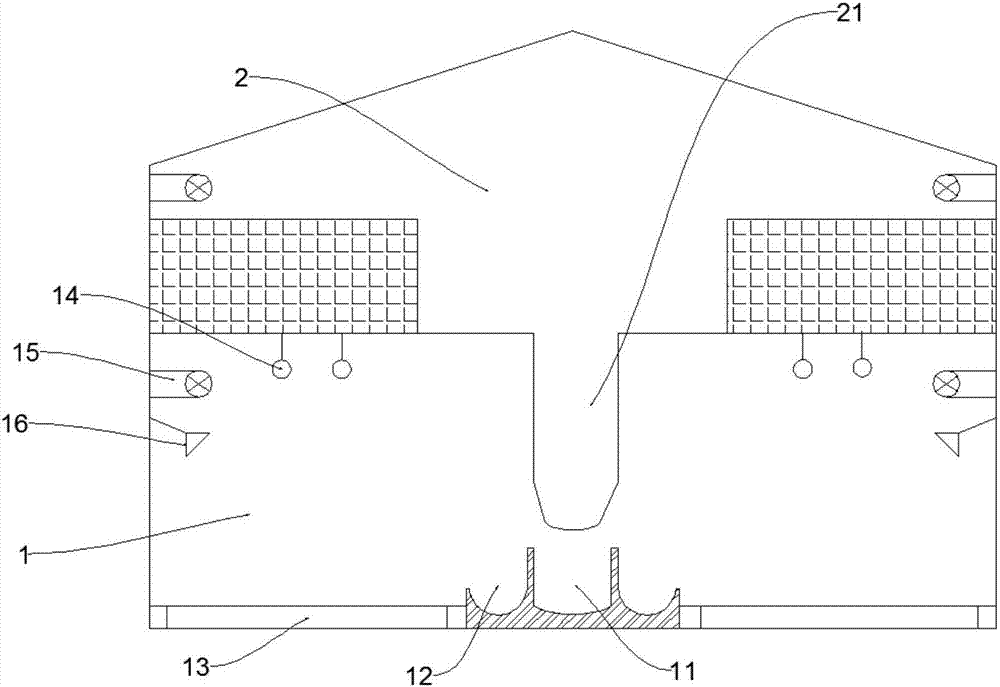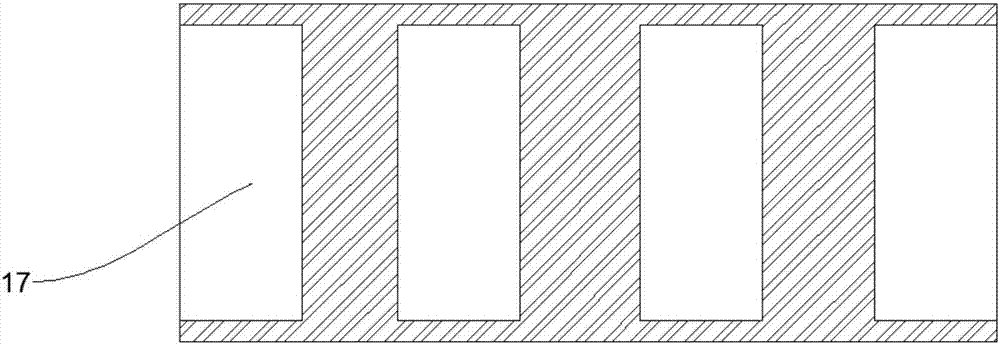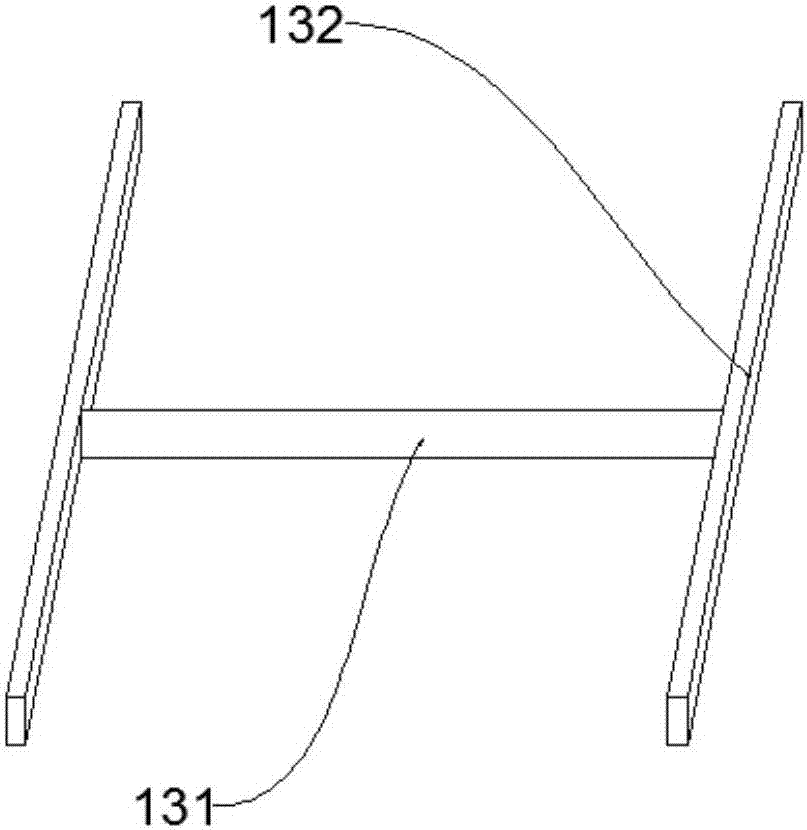Selenium-rich beef breeding method
A breeding method and beef cattle technology, which is applied in the field of beef cattle breeding, can solve the problems of sodium selenite poisonous and unsafe hidden dangers, and achieve the effects of happy mood, accelerated growth, and growth promotion
- Summary
- Abstract
- Description
- Claims
- Application Information
AI Technical Summary
Problems solved by technology
Method used
Image
Examples
Embodiment 1
[0030] A breeding method for selenium-enriched beef cattle, such as Figure 1~3 shown, including the following steps:
[0031] S1. Planting and treatment of selenium-enriched forage: apply 300 kg / mu of selenium-containing farmyard manure after plowing and disinfection on the pasture, and then mix ryegrass and sweet potato in the pasture at a volume ratio of 2:1. After germination, ryegrass and sweet potato Spray selenium-containing foliar fertilizer every 10 days during the growth stage, mow ryegrass and sweet potato during their flowering stages, and make silage after cutting according to the mass ratio of 8:1 For ryegrass feed and dry ryegrass forage, the harvested sweet potato is made into silage and dry sweet potato forage in a mass ratio of 7:1; wherein, the selenium-containing farmyard manure includes the following components in parts by weight: 200 parts of decomposed cow dung, 50 parts of decomposed vermicompost, 3 parts of selenium ore powder, 20 parts of plant ash, ...
Embodiment 2
[0043] A breeding method for selenium-enriched beef cattle, such as Figure 1~3 shown, including the following steps:
[0044] S1. Planting and treatment of selenium-enriched forage: apply 400 kg / mu of selenium-containing farmyard manure after plowing and disinfection on the pasture, and then mix ryegrass and sweet potato in the pasture at a volume ratio of 2:1. After germination, ryegrass and sweet potato Spray selenium-containing foliar fertilizer every 15 days during the growth stage, mow ryegrass and sweet potato during the flowering period of ryegrass and sweet potato, and make silage after cutting according to the mass ratio of 8:1 For ryegrass feed and dry ryegrass forage, the harvested sweet potato is made into silage and dry sweet potato forage in a mass ratio of 7:1; wherein, the selenium-containing farmyard manure includes the following components in parts by weight: 300 parts of decomposed cow dung, 80 parts of decomposed vermicompost, 5 parts of selenium ore powd...
Embodiment 3
[0056] A breeding method for selenium-enriched beef cattle, such as Figure 1~3 shown, including the following steps:
[0057] S1. Planting and treatment of selenium-enriched forage: apply 350kg / mu of selenium-containing farmyard manure after plowing and disinfection in the pasture, and then mix ryegrass and sweet potato in the pasture at a volume ratio of 2:1. After germination, ryegrass and sweet potato Spray selenium-containing foliar fertilizer every 12 times during the growth stage, mow the ryegrass and the sweet potato during their flowering stages, and make the ryegrass into black silage according to the mass ratio of 8:1. Wheatgrass forage and dry ryegrass forage, after mowing, the sweet potato is made into silage and dry sweet potato forage in a mass ratio of 7:1; wherein, the selenium-containing farmyard manure includes the following components by weight: decomposed 250 parts of cow dung, 60 parts of decomposed vermicompost, 4 parts of selenium ore powder, 25 parts ...
PUM
 Login to View More
Login to View More Abstract
Description
Claims
Application Information
 Login to View More
Login to View More - R&D
- Intellectual Property
- Life Sciences
- Materials
- Tech Scout
- Unparalleled Data Quality
- Higher Quality Content
- 60% Fewer Hallucinations
Browse by: Latest US Patents, China's latest patents, Technical Efficacy Thesaurus, Application Domain, Technology Topic, Popular Technical Reports.
© 2025 PatSnap. All rights reserved.Legal|Privacy policy|Modern Slavery Act Transparency Statement|Sitemap|About US| Contact US: help@patsnap.com



